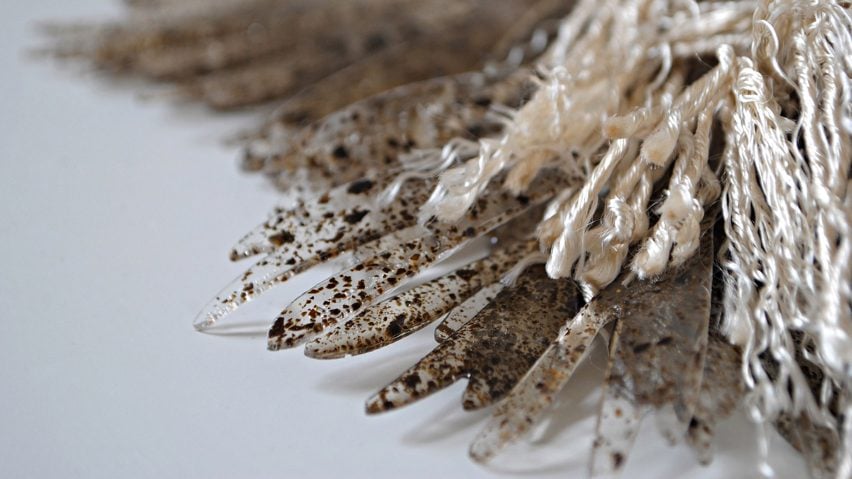
Dezeen's top 10 innovative materials of 2019
From lab-grown spider silk to cellulose, design and technology reporter Natashah Hitti continues our review of the year with 10 of the most interesting materials developed or used throughout 2019, with a particular focus on reuse.
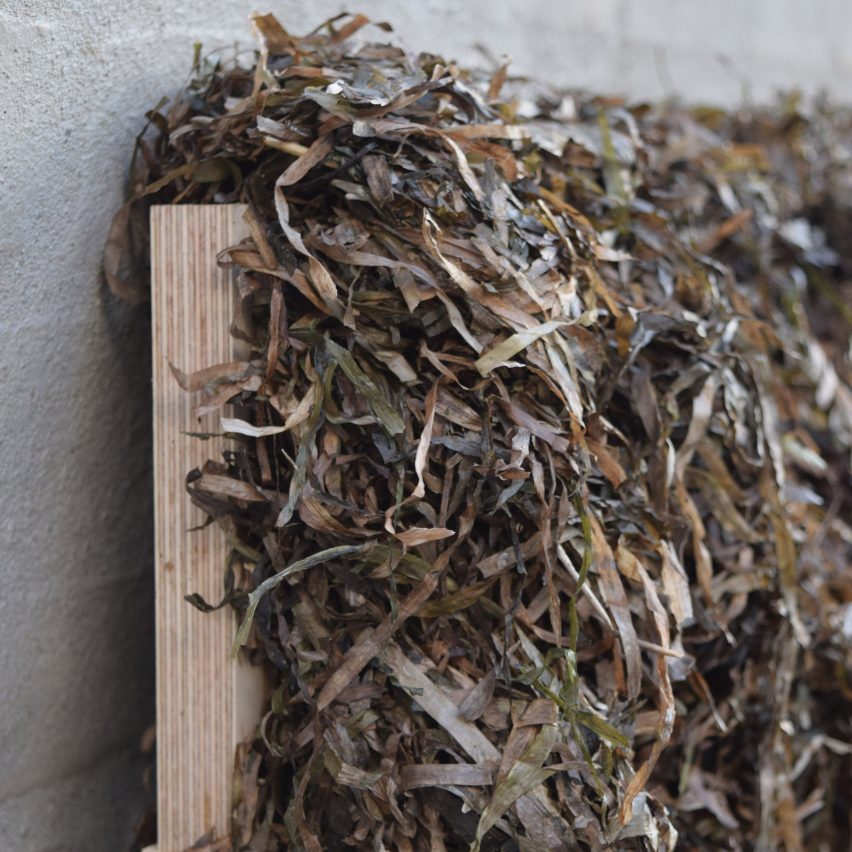
As the climate crisis puts pressure on people to think twice about what they produce, many designers looked to algal forms like seaweed as a sustainable alternative to plastic and other materials.
Luisa Kahlfeldt and Jasmine Linington both used a fabric called SeaCell, composed of seaweed and eucalyptus, to create sustainable alternatives to disposable diapers and the materials used in couture fashion respectively.
Copenhagen School of Business and Design student Kathryn Larsen developed a way for seaweed to be used as prefab panelling or thatching, while this year's London Marathon runners were offered edible seaweed drinks capsules in place of plastic bottles.
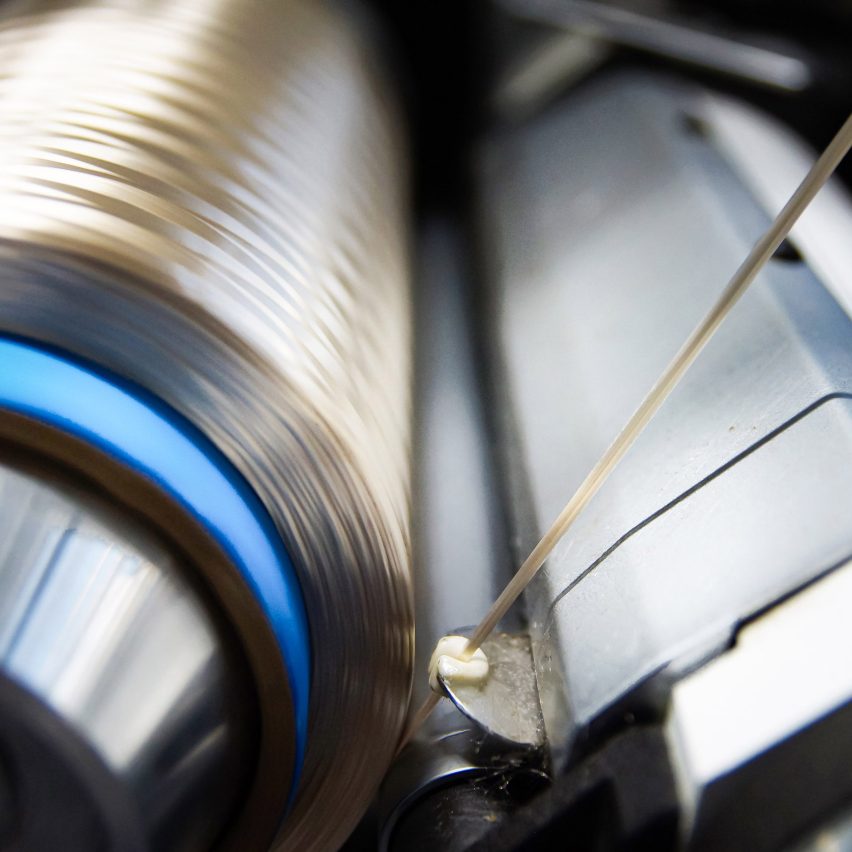
Spider silk
On the same eco-friendly streak, garments from vegan spider silk came to the fore this year. For example, biotech startup Spiber created the first commercially available jacket made from synthetic spider silk for The North Face.
Adidas and Stella McCartney also worked with Californian biotech startup Bolt Threads to recreate a version of the proteins found in spider silk in a laboratory, to form the "fully biodegradable" Biofabric Tennis Dress.
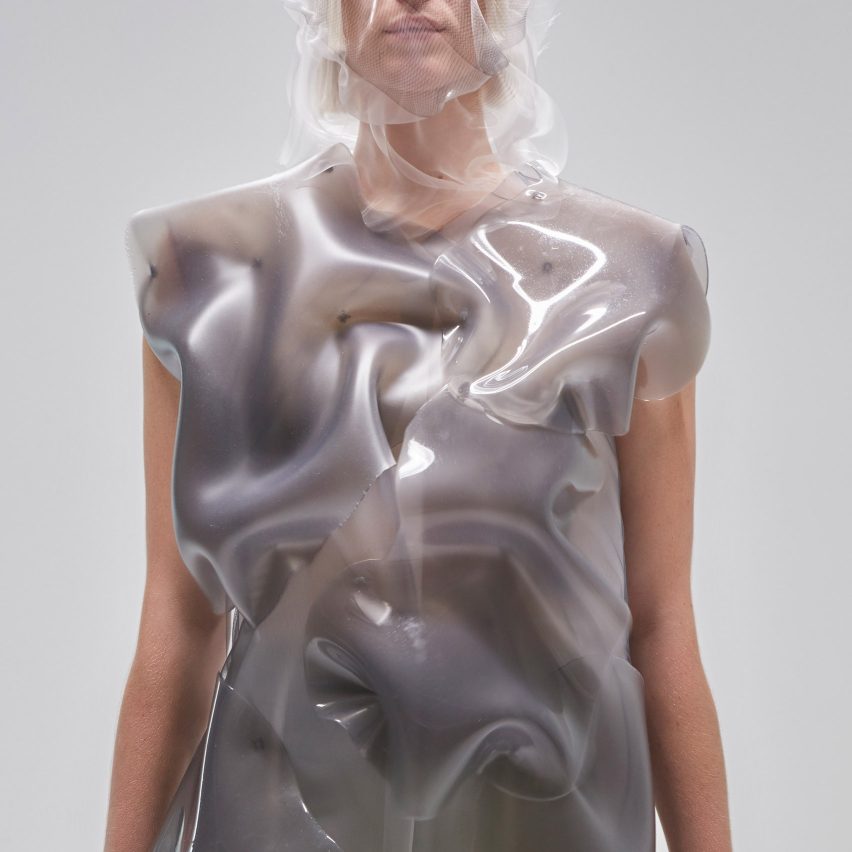
Responsive materials
Smart, adaptive materials have also been popular among designers. Fashion designer Ying Gao created a pair of autonomous, robotic dresses that respond to particular colours in their immediate surroundings by moving as if alive.
Similarly, Layer developed a smart material for aircraft seating that detects passengers' needs, and researchers at the University of Maryland invented a responsive textile made from polymer fibres coated with carbon nanotubes that warms up the wearer when they're cold and cools them down when they're hot.
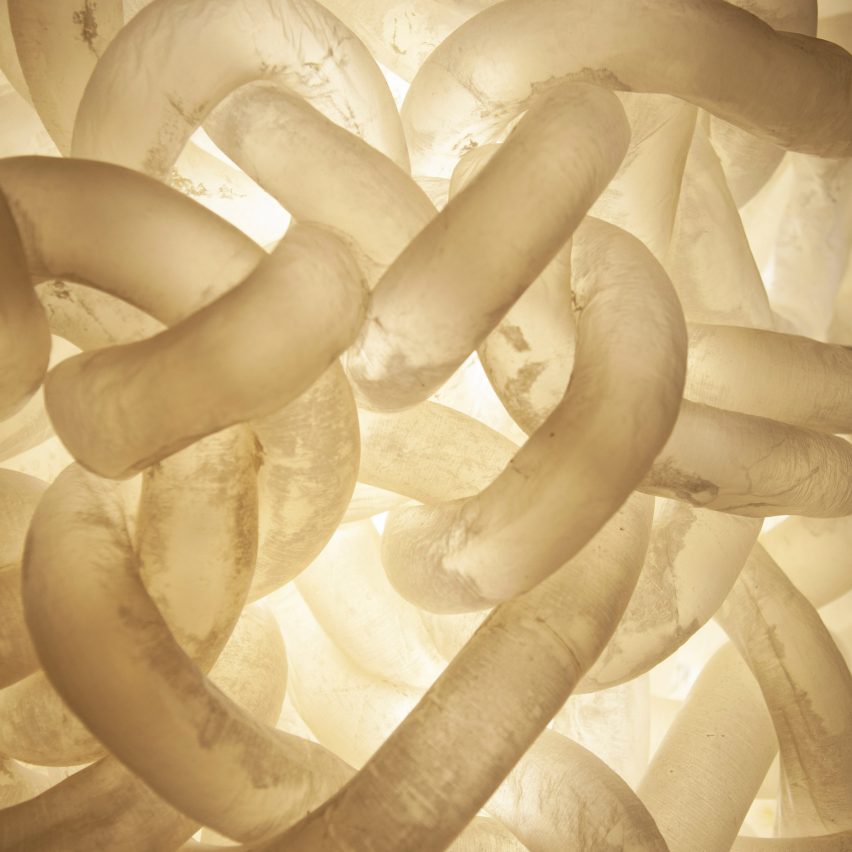
Animal byproducts
Despite vegan design being on the rise this year, some designers took a different stance by putting animal byproducts that would otherwise go to waste to use in their creations.
Danish designer Kathrine Barbro Bendixen used discarded cow intestines to make a series of sculptural lights, comprised of translucent tubes that twist around an LED fixture.
Shahar Livne also designed a pair of trainers with alternative leather inserts made of animal fat, bones and blood taken from waste streams of slaughterhouses, while Reykjavík studio At10 made a bioplastic meat packaging from the skin of the animal itself.
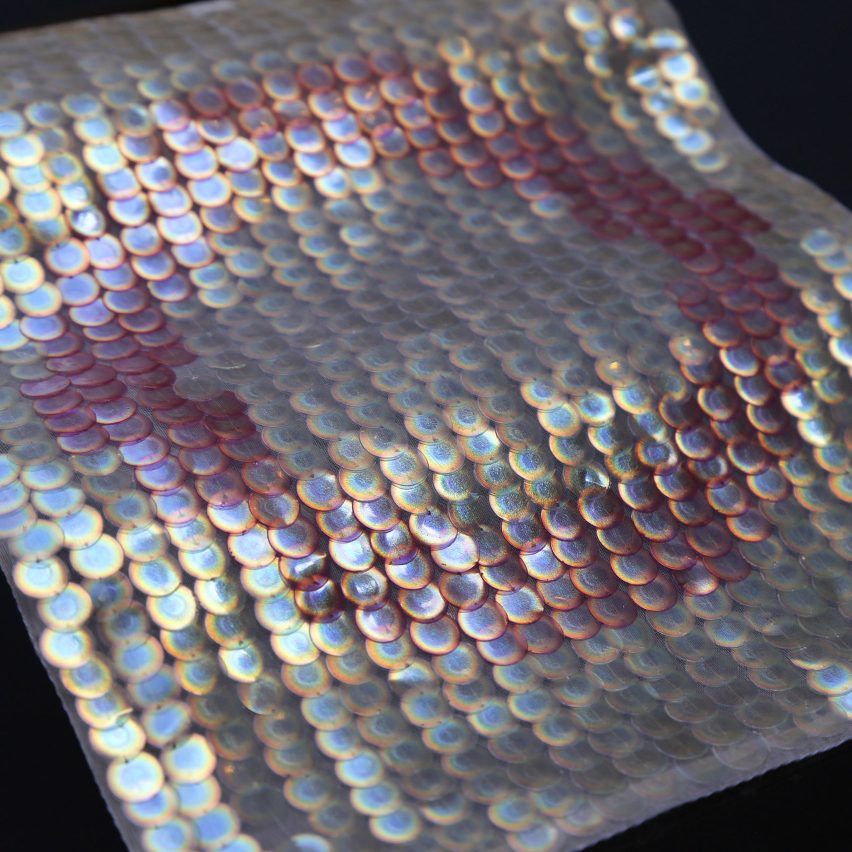
Cellulose
Another organic material that designers looked to this year was cellulose – an organic compound that gives plants their structure.
Meydan Levy developed a series of edible artificial fruits made up of 3D-printed cellulose skins that are filled with various vitamins and minerals, while Elena Amato used the compound to create sustainable cosmetics packaging.
Elissa Brunato developed a way of making iridescent sequins from cellulose extracted from trees. According to the designer, the cellulose's crystalline form refracts light and makes the sequins naturally shimmery.
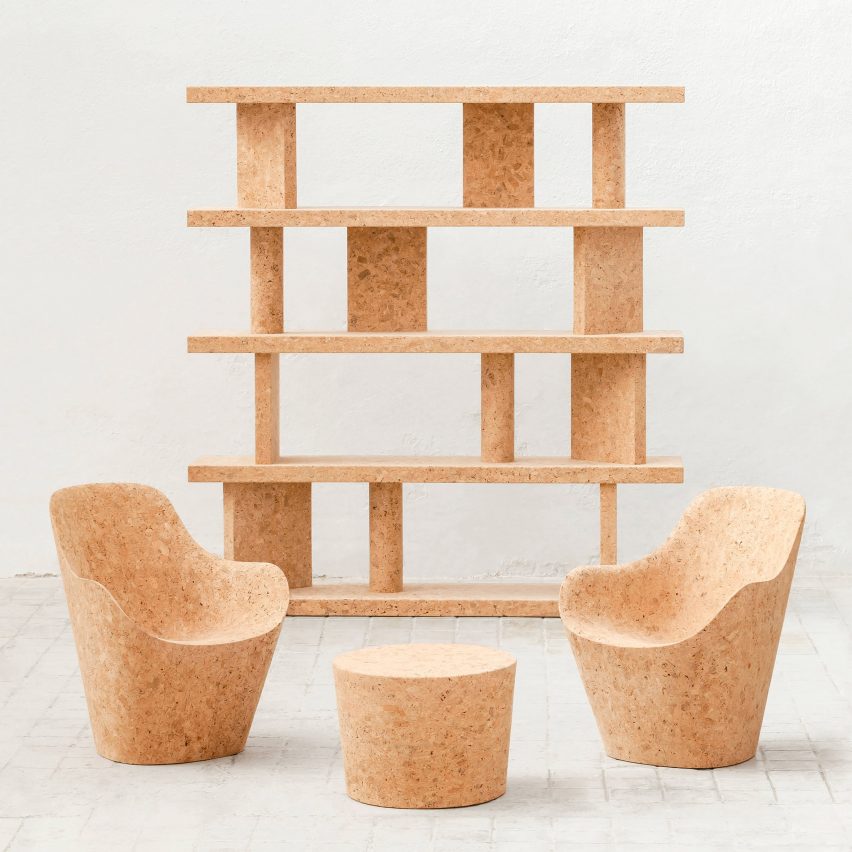
Cork was also a material on the rise this year, favoured by many designers and architects for its compostable and recyclable properties.
Matthew Barnett Howland, Dido Milne and Oliver Wilton built a house from cork blocks supported by timber components, designed in a way that it can be easily dismantled, reused or recycled, while Nimtim Architects used the material for the walls of a London house extension.
Portuguese studio Digitalab used an innovative cork thread to create a collection of lighting and accessories, and Jasper Morrison made a series of furniture items from cork block left over from wine-bottle cork-stopper production.
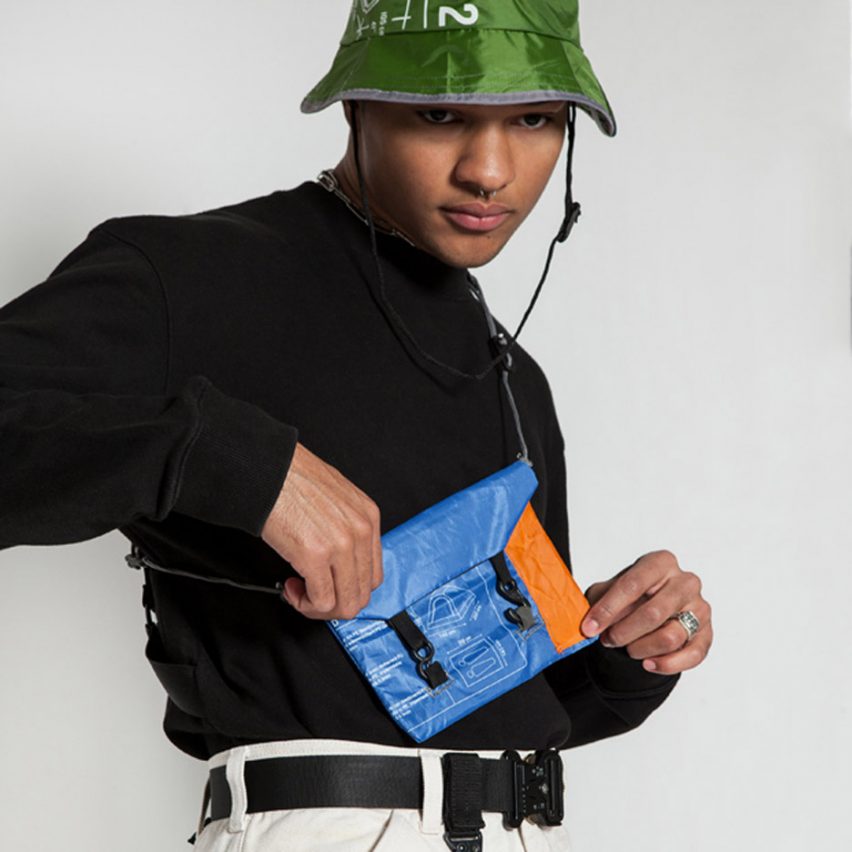
Tents and parachutes
An unusual but popular choice of items to save from landfill this year were tents and parachutes, typically made from nylon, which designers reused to make fashion and furniture pieces.
Graduate designers Chloe Baines and Tuo Lei both made fashion garments from tents left behind at music festivals, while design studio Layer created a series of chairs and screens from recycled, surplus ex-military parachutes and aircraft brake parachutes.
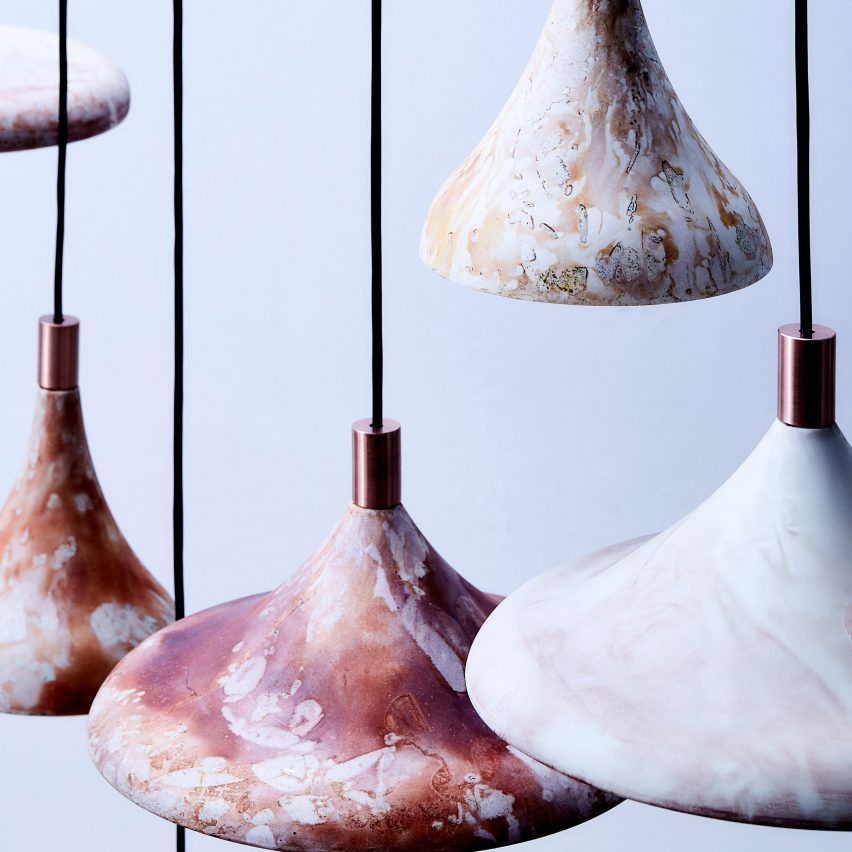
Designers also came up with different ways to reuse waste coffee grounds, including Jamie Pybus, who developed a household system that uses leftover coffee grounds as a fertile medium for growing edible mushrooms.
Italian design studio High Society used discarded coffee bean peels to make a series of lamps, while Zhekai Zhang used the caffeinated material to create marble effects on porcelain lights.
Industrial design studio PriestmanGoode also replaced single-use plastic with coffee grounds and husks to make meal trays for long-haul flights.
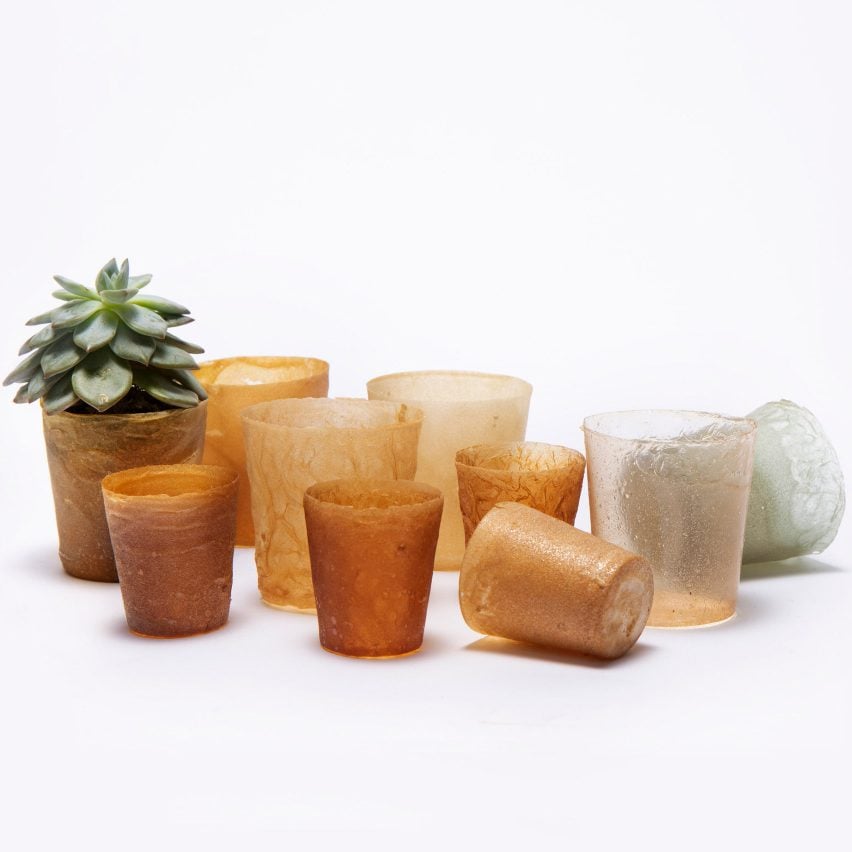
Bioplastic
The development of bioplastic alternatives to petroleum-based plastics continued to be at the forefront of designers' minds this year.
British designer Lucy Hughes used fish waste to create a compostable bioplastic as an alternative to single-use packaging like bags and sandwich wrappers, and scooped the overall James Dyson Award for her efforts.
Designers have also utilised food waste to create bioplastics, such as Carlo Ratti's juice cups made from orange peel, and Shellworks' paper-like material made from discarded lobster shells.
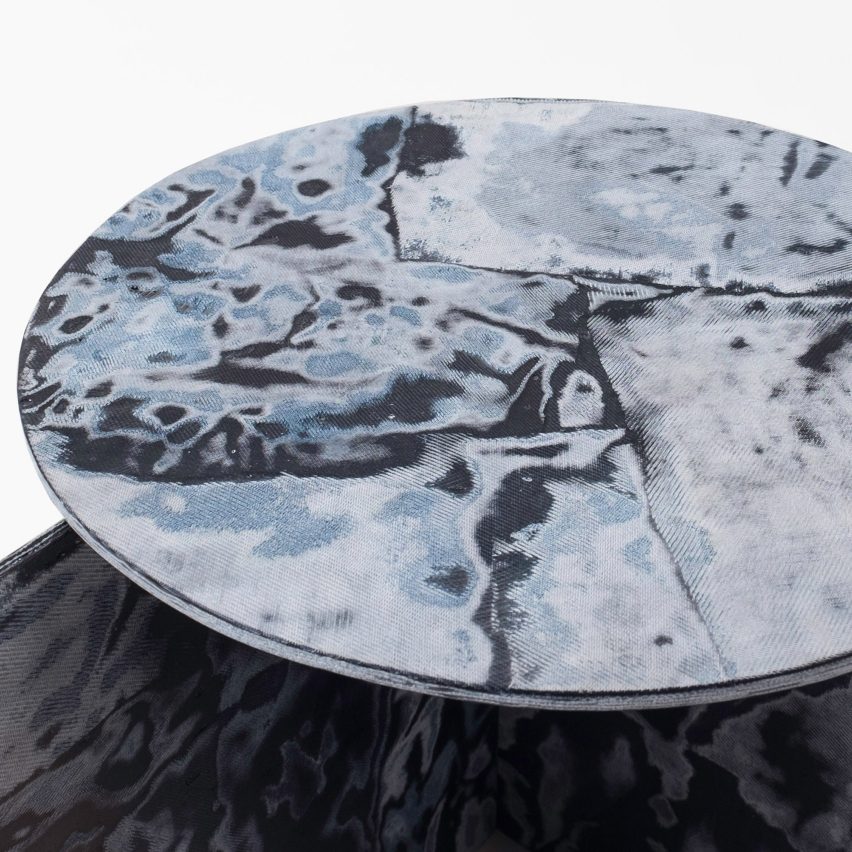
Used clothing
With over 100 billion items of clothing produced each year, creatives have resorted to using old garments in product design as a way of keeping the surplus textiles from being thrown away.
Examples include Sophie Rowley, who took discarded denim jean offcuts and made them into a series of tables featuring mottled patterns similar to marble, and Harry Nuriev who filled a transparent vinyl sofa with worn and discarded Balenciaga clothing.
Dutch designer Simone Post also made a series of patterned rugs for sportswear giant Adidas by shredding the brand's old sports trainers into granules.